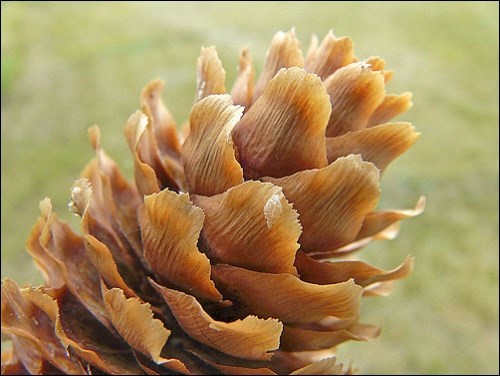One of the most interesting things about gardening is that you can never get tired of it, because every year it is different. Take this year as a prime example. As of the end of May, we are dealing with the majority of our plant material being about a month ahead. This could be attributed to April having much more similar weather to May or even the end of May, with just a few days of cooler weather. Hence we have lilacs and bleeding hearts almost finished their bloom and the spring pollination being completed as well.
This brings me to the topic of the article this week. You may have noticed a lot of yellow dust blowing around, settling on your vehicles and making the edges of puddles bright yellow in colour. This my dear fellow gardeners is the result of procreation at the conifer level. I spent the long weekend reclining as much as possible in the back garden as I was fortunate enough to succumb to the summer flu that is going around. With every gust of wind, the air was literally polluted with pollen. I happened to be sitting under a giant Colorado spruce tree so all I had to do was look up for the source of that pollen. At the very top of the tree there was a copious amount of bright purple cones that were to blame for the huge amount of pollen drifting around. Please enjoy the following read on the sex lives of conifers.
Many beautiful evergreens like spruce, pine and fir grace our landscapes. These trees are all conifers or cone producing plants and are part of the gymnosperm division of plants. Gymnosperms have been reproducing for over 300 million years, far before any of our more modern day flowering plants (or angiosperms) even existed. How they reproduce sexually is very different than that of our flowering plants.
While in angiosperms, showy flowers are produced with the reproductive parts of the flower part of the show or nestled tightly inside of the petals. Plants belonging to the gymnosperm division of plants actually contain both male and female cones on the same tree. Male cones are smaller than the female cones and are often located on a different region of the tree than the female cones. The female cones are larger and contain all the seeds of the conifer. These showy female cones consist of scales that are intricately arranged and show great difference between species. We use them to adorn wreaths, our tables and other holiday festive decor. Yes, every Christmas when we are making pine cone wreaths, we are actually using the female reproductive organs of gymnosperms or if you like the "lady bits".
A typical conifer reproductive cycle begins in the spring. The male cone has an easy job. These clusters of small, often brightly coloured cones release huge quantities of pollen in the hope of "knocking up" a fair female cone. You may have noticed clouds of what appears similar to yellow smoke lately. These individual pollen grains that make up the "yellow smoke" are distributed by wind in the hope of finding a "mate.” The job of the female cone is of course much more complex. It is her job to keep those individual pollen grains safe until fertilization can occur. She has a complex duty, so early in the spring when the pollen clouds are floating on the breezes, she gently opens her scales in order to allow some of these pollen grains to get lucky enough to enter her lair and be protected. The following spring is actually when fertilization occurs and together, the male and female parts will produce sexual cells. As the seed matures from the fertilized ovule the female cone will grow. Eventually, when mature, the scales of the cone will flex and separate, thus releasing the seed to enable the forest to regenerate.
So, now you are armed with yet a little bit more knowledge of the garden to use as trivia or to help make sense of what we are observing regularly in just another day in the life of the gardener.
— Hanbidge is a horticulturist with the Saskatoon School of Horticulture and can be reached at 306-931-GROW(4769); by email at growyourfuture@gmail.com or check out our website at www.saskhort.com.



